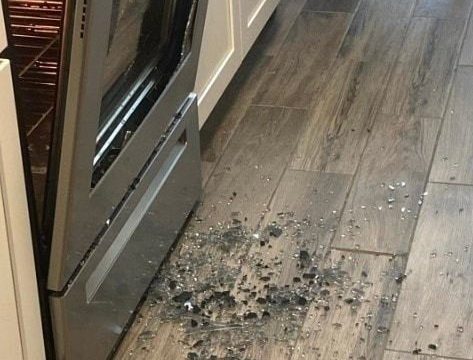Have you ever been just about to fall asleep, only to be jolted awake by a sudden body spasm? It’s a strange, often unsettling feeling that can make you feel as if you’re falling. This phenomenon, called a hypnic jerk, is more common than you might think—up to 60% to 70% of people experience it at some point. But why does it happen? Let’s explore the science behind hypnic jerks and the stages of sleep that trigger them.

Understanding the Stages of Sleep
To understand hypnic jerks, you first need to know about the sleep process. Sleep isn’t just a matter of “on” or “off.” Instead, it’s a complex cycle with different stages that help your body and mind recover.
Stage One: The Start of Light Sleep
The first stage of sleep is a brief transition that lasts only a few minutes. Here’s what happens:
- Your heartbeat and breathing become more regular.
- Eye movements slow down.
- Muscles start to relax as brain waves slow from their alert state.
Hypnic jerks most often occur during this initial phase as your body adjusts from being awake to falling asleep.
Stage Two: Deepening Light Sleep
This stage prepares your body for deeper rest:
- Heart rate and breathing slow even further.
- Body temperature drops to signal deeper sleep.
- Short bursts of electrical activity called sleep spindles occur in the brain.
This stage lasts longer than the first and acts as a bridge to more restorative sleep.
Stage Three: Deep Sleep
During this phase, your body is in its most restful state:
- Heartbeat and breathing slow to their lowest levels.
- Muscles fully relax, making it harder to wake up.
- Brain activity significantly decreases to support memory and recovery.
At this point, hypnic jerks are less likely to happen since your body has reached a more stable sleep rhythm.
REM Sleep: The Dream Stage
Around 90 minutes into sleep, you enter Rapid Eye Movement (REM) sleep:
- Your eyes move rapidly under closed lids.
- Brain activity spikes, leading to vivid dreams.
- Heart rate and blood pressure increase while breathing becomes irregular.
During REM sleep, the body remains essentially “paralyzed” to prevent acting out dreams, so sudden jerks are rare at this stage.
What Exactly Are Hypnic Jerks?
Hypnic jerks, also known as hypnagogic jerks or sleep starts, are sudden involuntary muscle spasms that happen when you’re transitioning from wakefulness to sleep. They can range from small twitches to intense, full-body jolts and are often paired with the sensation of falling. This natural part of the sleep-wake cycle isn’t harmful but can be startling.
Why Do Hypnic Jerks Occur?
The exact cause of hypnic jerks isn’t fully understood, but there are a few popular theories:
- Nervous System Misfires
- As the brain begins to slow down during the transition to sleep, it may mistakenly activate motor neurons, leading to sudden muscle contractions. Essentially, your brain may misinterpret relaxation signals, causing a hypnic jerk.
- Evolutionary Reflex
- Some experts suggest that hypnic jerks might be a survival mechanism from early humans. When our ancestors slept in trees or elevated positions, these jerks could have acted as a reflex to prevent falling, jolting them awake in case of danger.
- Fatigue and Sleep Deprivation
- Hypnic jerks are more common when you’re exhausted or not getting enough sleep. The brain may rush through the initial stages of sleep, leading to abrupt transitions that result in a jerk.
Are Hypnic Jerks Dangerous?
The good news is that hypnic jerks are harmless. Though they can feel surprising, they’re not a sign of any underlying health issue. They’re simply part of the body’s natural shift from being awake to falling asleep.
Tips to Reduce Hypnic Jerks
If hypnic jerks disrupt your sleep regularly, here are some ways to minimize them:
- Prioritize Restful Sleep
- Aim for 7-9 hours of sleep per night to reduce the likelihood of jerks caused by fatigue.
- Create a Calming Bedtime Routine
- Incorporate soothing activities like reading or meditation to help your body transition smoothly into sleep.
- Avoid Stimulants
- Caffeine and other stimulants can keep your brain active, making hypnic jerks more likely. Try to limit caffeine intake, especially in the evening.
- Practice Deep Breathing
- If a hypnic jerk wakes you up, try deep, slow breathing to calm your mind and help you return to sleep.
What About Daytime Hypnic Jerks?
Although hypnic jerks usually happen at night, they can sometimes occur during the day if you’re extremely tired—like when you’re struggling to stay awake in a meeting or a lecture.
Staying Alert During the Day
To stay awake and avoid daytime jerks:
- Focus your attention: Engage with your surroundings, such as making eye contact with the speaker.
- Drink caffeine strategically: A cup of coffee can help keep you alert during long meetings.
- Adjust your environment: Sit in a bright, well-ventilated area to stay awake.
Conclusion: Embracing the Body’s Natural Reflexes
Hypnic jerks are a normal part of the body’s transition from wakefulness to sleep, often occurring when you’re tired or sleep-deprived. Though they can be alarming, they’re not dangerous. By understanding why they happen, you can manage them better and achieve more restful sleep. So, the next time you experience one, remember that it’s just your body adjusting to rest.





